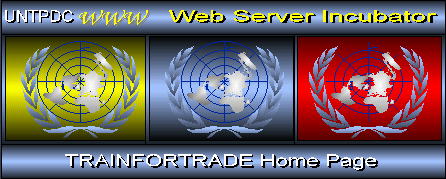

 Objectives of the course:
Objectives of the course:
(1) to highlight the main physical aspects of commodity trading
with regard to cocoa, coffee, cotton, sugar and palm oil;
(2) to provide commodity traders with updated operational knowledge
of international commodity markets and prices, commodity futures
trading, commodity options trading and financial instruments.
 Target audience:
Target audience:
(1) Commodity traders and managerial staff of commodity marketing
boards;
(2) Shippers management staff involved in the trade of commodities;
(3) Loan and credit officers of banks engaged in commodity trading.
 Structure of the course:
Structure of the course:
Physical markets:
Module 1: The economics of commodities (cocoa, coffee,
cotton, sugar, palm oil)
Module 2: Transport and logistics
Module 3: Contracts: terms and execution
Module 4: Payment and financing
Module 5: Price determination
Module 6: Sources of information and analysis
Futures and options markets:
Module 1: Trade policies in the field of commodities
Module 2: Price formation mechanisms in international commodity markets
Module 3: Mechanisms of commodity futures markets: trading strategies
Module 4: Mechanisms of commodity options markets: trading strategies
Module 5: Financial instruments in commodity trading UNCTAD/TRAINFORTRADE Programme Course on Commodity Trading: Physical Markets
Objectives of the course:
(1) to highlight the main physical aspects of commodity trading with regard to cocoa, coffee, cotton, sugar and palm oil;
(2) to provide commodity traders with updated operational knowledge of international commodity markets and prices, contracts, payments, transport and market information.
Target audience:
(1) Commodity traders and managerial staff of commodity marketing boards;
(2) Shippers management staff involved in the trade of commodities;
(3) Loan and credit officers of banks engaged in commodity trading.
Structure of the course:
Module 1: The economics of commodities (cocoa, coffee, cotton, sugar, palm oil) Historical trends in production, processing, export and distribution of the five commodities.
Module 2: Transport and logistics Maritime shipping, container transport, freight, marine insurance, transport documents and multimodal transport.
Module 3: Contracts: terms and execution Advantages and disadvantages related to trade contracts, quantity and quality control, INCOTERMS, dispute settlement, arbitration.
Module 4: Payment and financing Payment channels, financial risks, types of credit, export financing.
Module 5: Price determination Pricing, relationship between cash markets and future markets, determination of contract prices, use of future markets in physical trade.
Module 6: Sources of information and analysis Periodical and computerized sources of market information, fundamental analysis and technical analysis. UNCTAD/TRAINFORTRADE Programme Course on Commodity Trading: Futures and Options Markets Objective of the course: to provide commodity traders with up-to-date operational knowledge of international commodity markets and prices, commodity futures trading, commodity options trading and financial instruments.
Target audience:
(1) Commodity traders and managerial staff of commodity marketing boards;
(2) Loan and credit officers of banks engaged in commodity trading.
Structure of the course:
Module 1: Trade policies in the field of commodities Place and role of futures and options markets; Risk management in commodity trading operations.
Module 2: International commodity markets and price formation mechanisms Cocoa, coffee, sugar, cotton, palm oil: production characteristics; Market trends; Trading; Information, elasticity and price formation; Risk analysis.
Module 3: Mechanisms of commodity futures markets: trading strategies Organization and functioning of a commodity futures exchange; Cash/future price relationships; Hedging and arbitrage; Use of risk management instruments; Technical analysis.
Module 4: Mechanisms of commodity options markets: trading strategies Option pricing; Principal option strategies; Risk management from a strategic perspective.
Module 5: Financial instruments in commodity trading Currency risk management; Interest rate risk management. Training method: Module 1 makes full use of group training methods, including interactions between participants, trainers and experienced professionals.
Modules 2 to 5 are based on computer-assisted training programmes which allow each participant to study individually. At the end of each session, a summary discussion on the subject covered is moderated by the course leaders.